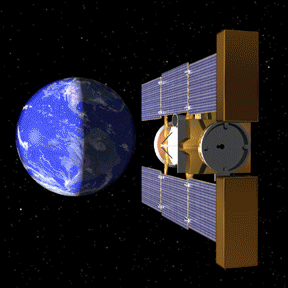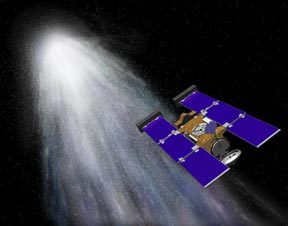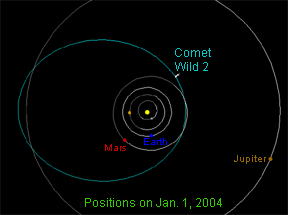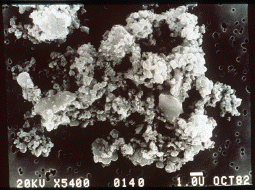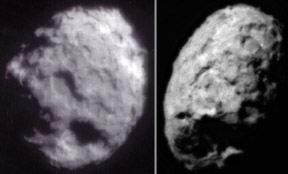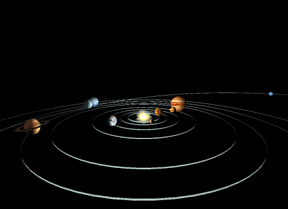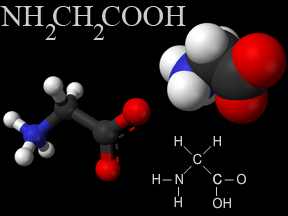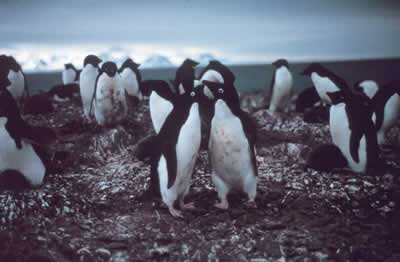Click on image for full size
Images courtesy NASA/JPL-Caltech; animation created by Windows to the Universe staff (Randy Russell).
Stardust returns - with comet dust!
News story originally written on January 11, 2006
The Stardust spacecraft will complete its comet sampling mission when it lands in the wee hours of the morning on January 15, 2006. A 100 pound (45 kg) sample return capsule carrying the mission's precious cargo of dust particles from Comet Wild 2 will land in the desert in Utah.
Stardust, which was launched in February 1999, has traveled 4.63 billion kilometers (2.88 billion miles) while looping around the Sun three times during its 7-year long mission. Along the way it captured interstellar dust grains that hurtle through our Solar System. In January 2004 it made its closest approach to Comet Wild 2 and snapped the best photos to date of a comet's nucleus. During that high-speed flyby it also accomplished the mission's main objective of capturing particles emitted by the comet. The spacecraft used an amazing, high-tech material called aerogel to snag dust particles from the comet.
As the spacecraft approaches Earth, it will release a sample return capsule containing the comet dust. The capsule will enter Earth's atmosphere at a speed of more than 23 thousand km/hour (14 thousand miles/hour), making it one of the highest speed atmospheric entries ever. A heat shield will protect the capsule as it hurtles through the atmosphere, then parachutes will open to lower the capsule to the ground. The capsule will be visible from northern Nevada (and possibly northern California and northwestern Utah) as it burns its way through the atmosphere; it will look like an exceptionally bright meteor. Check this NASA web site for details about viewing the capsule's entry, which will occur around 3 AM Mountain Time on January 15th.
If all goes well, the capsule will land gently in the Great Salt Lake Desert in Utah around 3:15 AM. Radio beacons on the capsule will guide recovery teams, in helicopters, to the landing site. The capsule will be transferred to a clean room where it will be opened. Scientists will then begin to study the first samples of a comet ever returned to Earth, in hopes of unlocking some of the secrets of the history of our Solar System that they suspect cometary particles might reveal.


